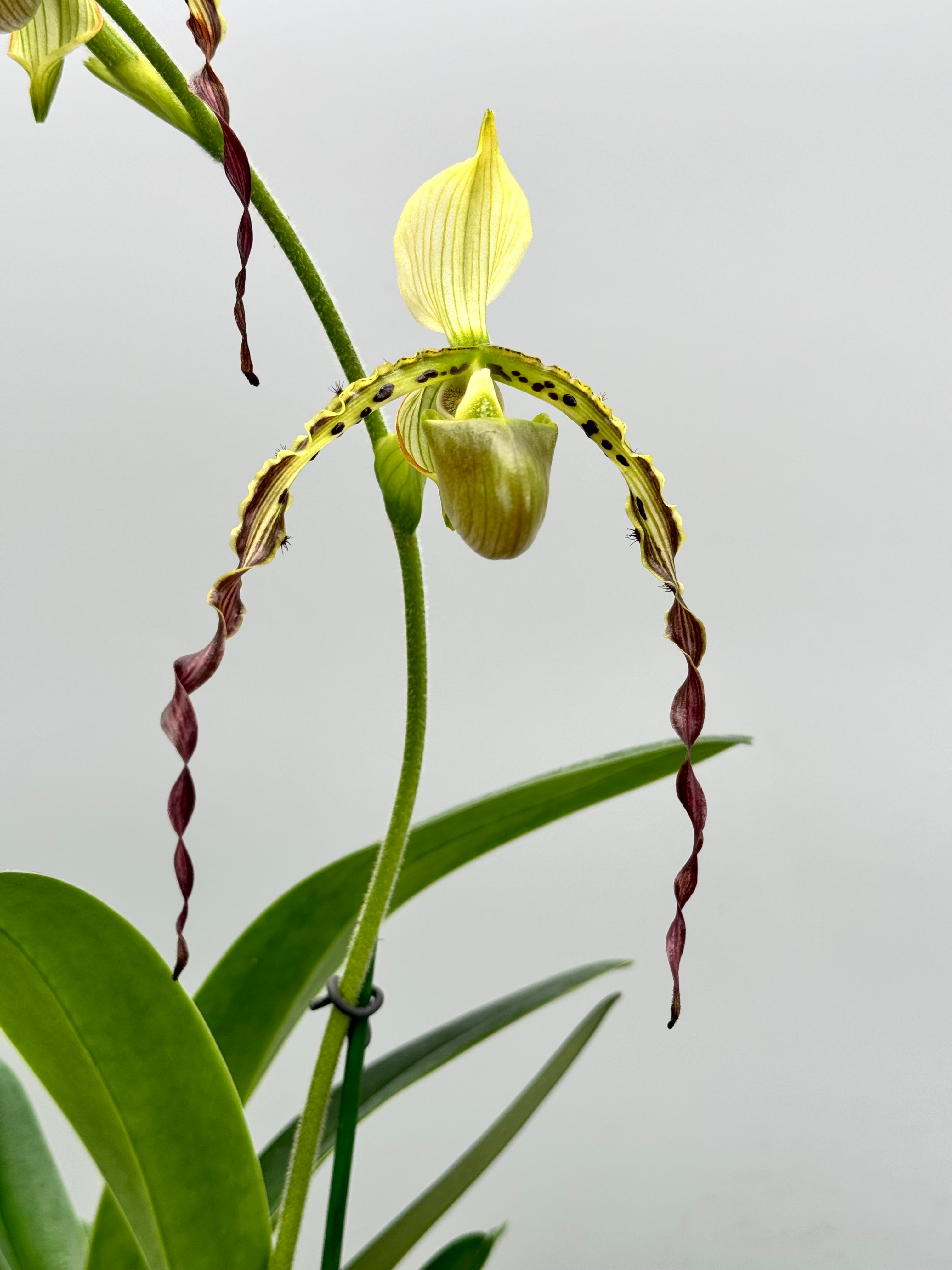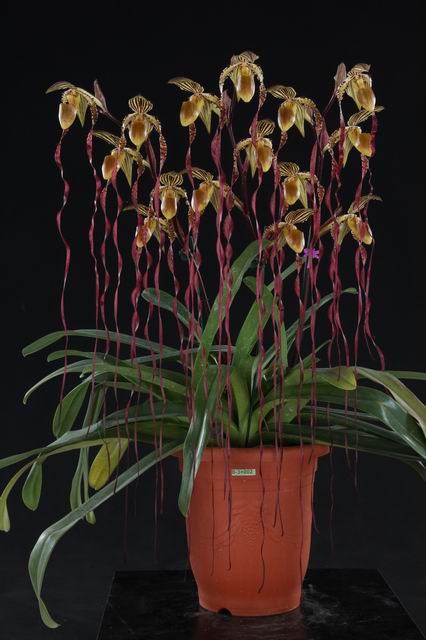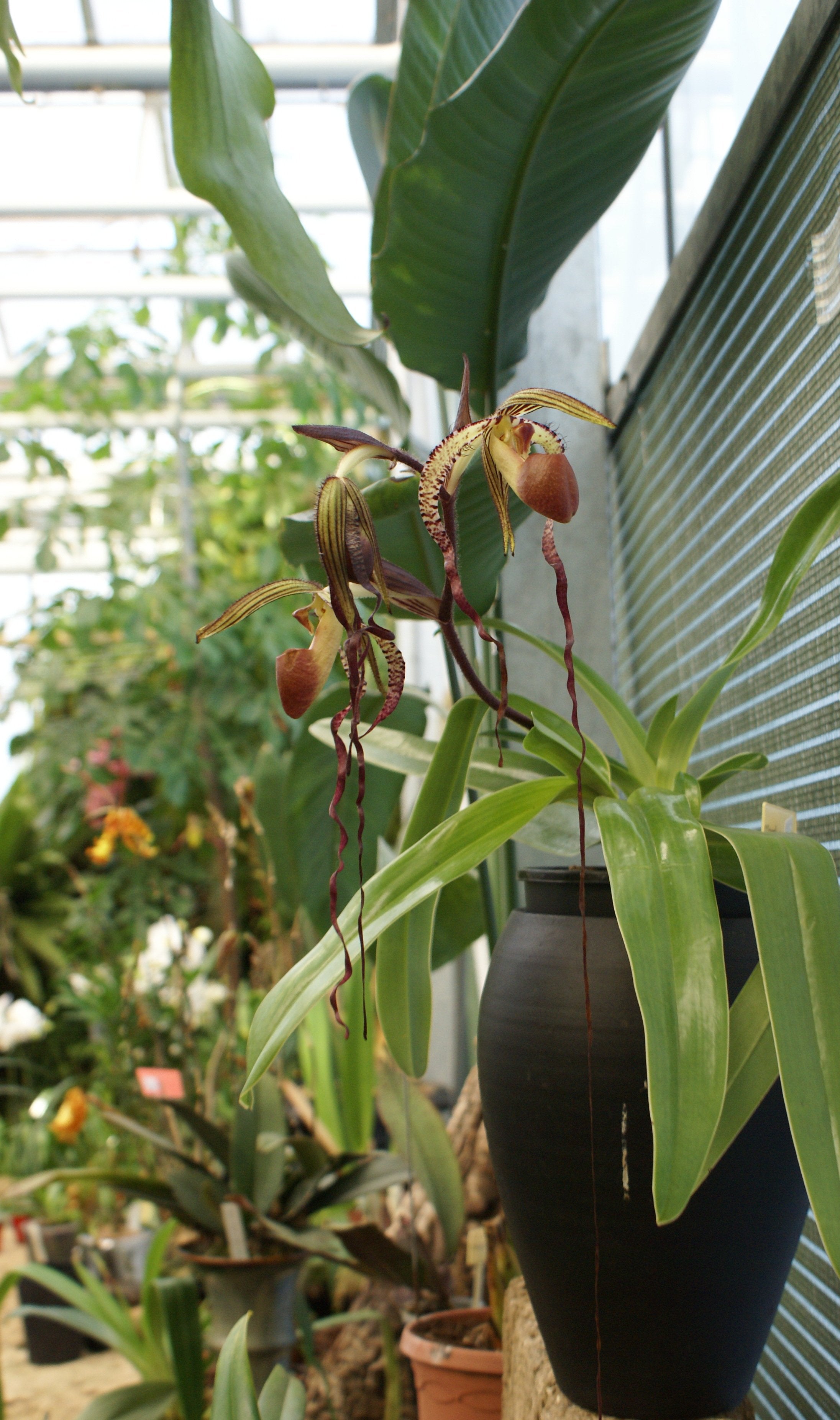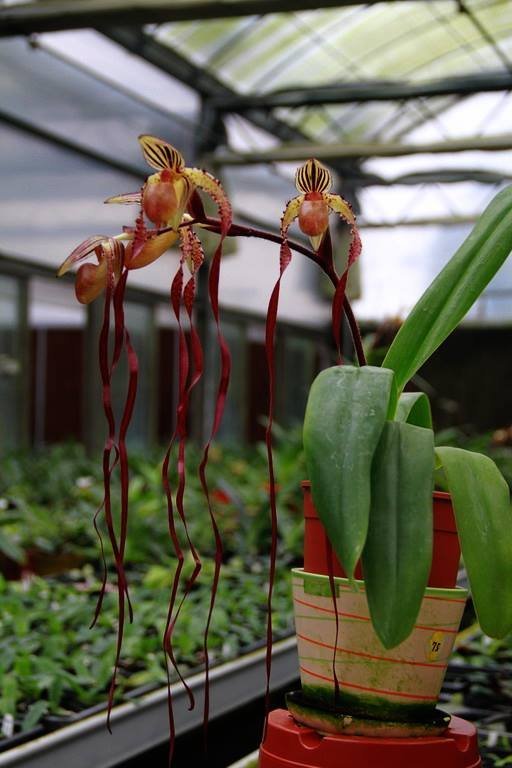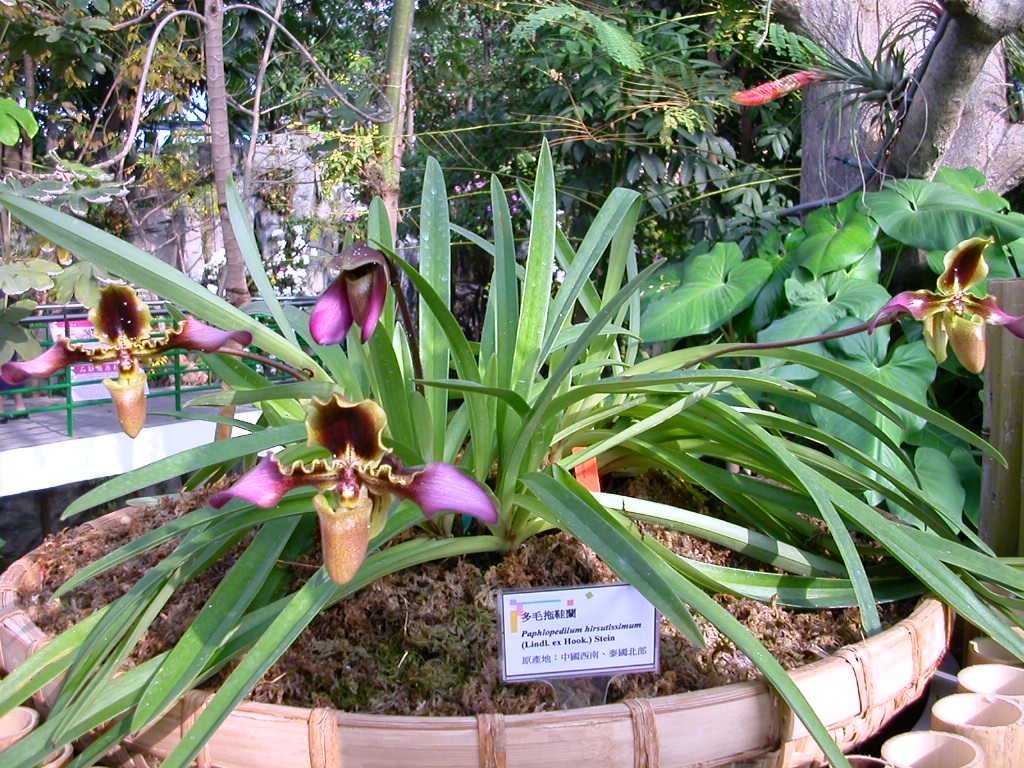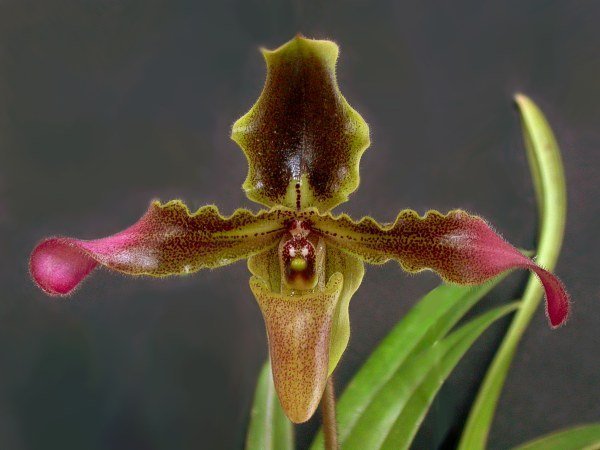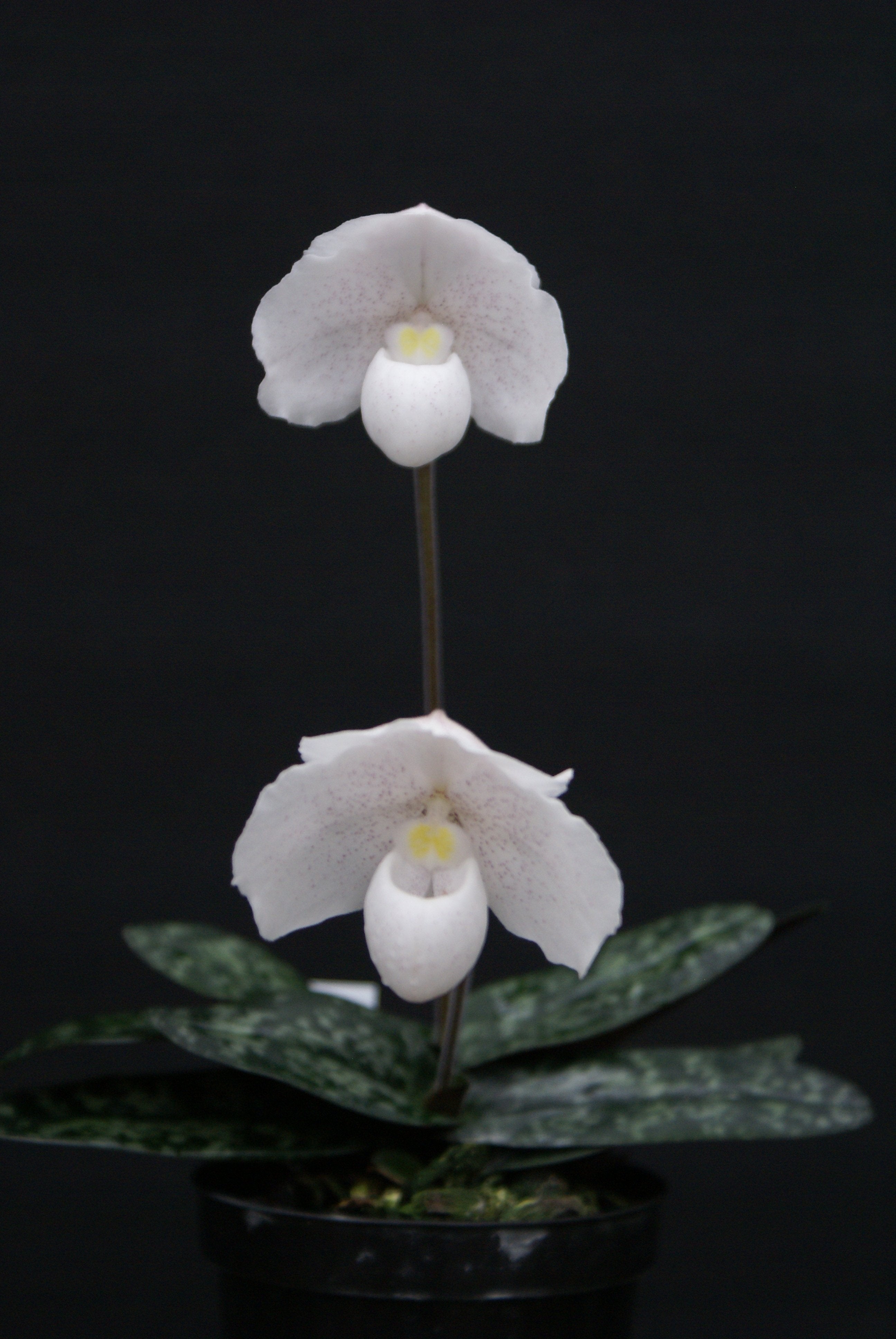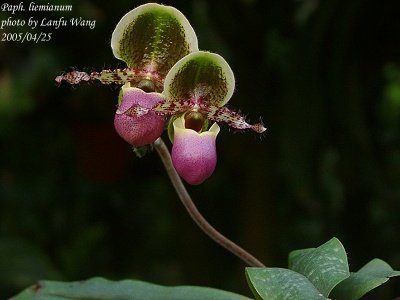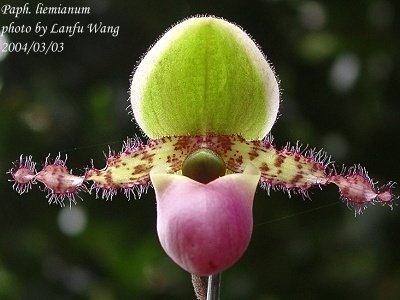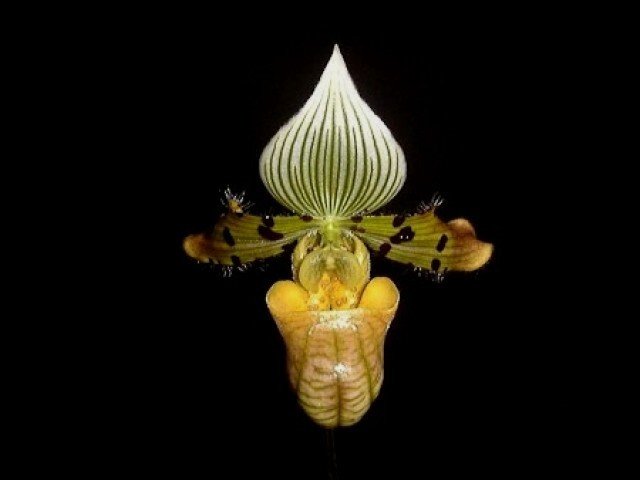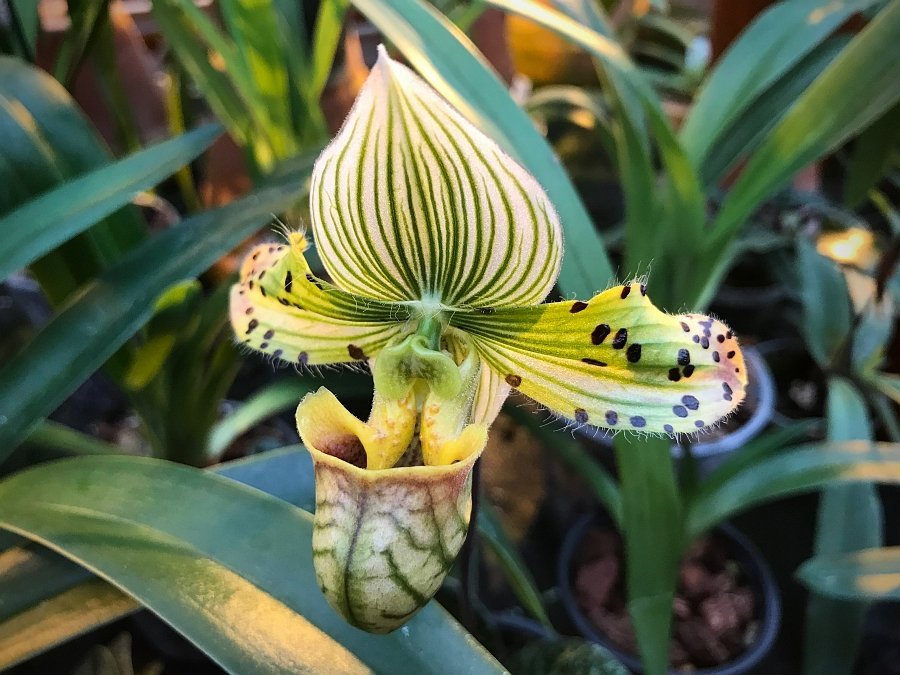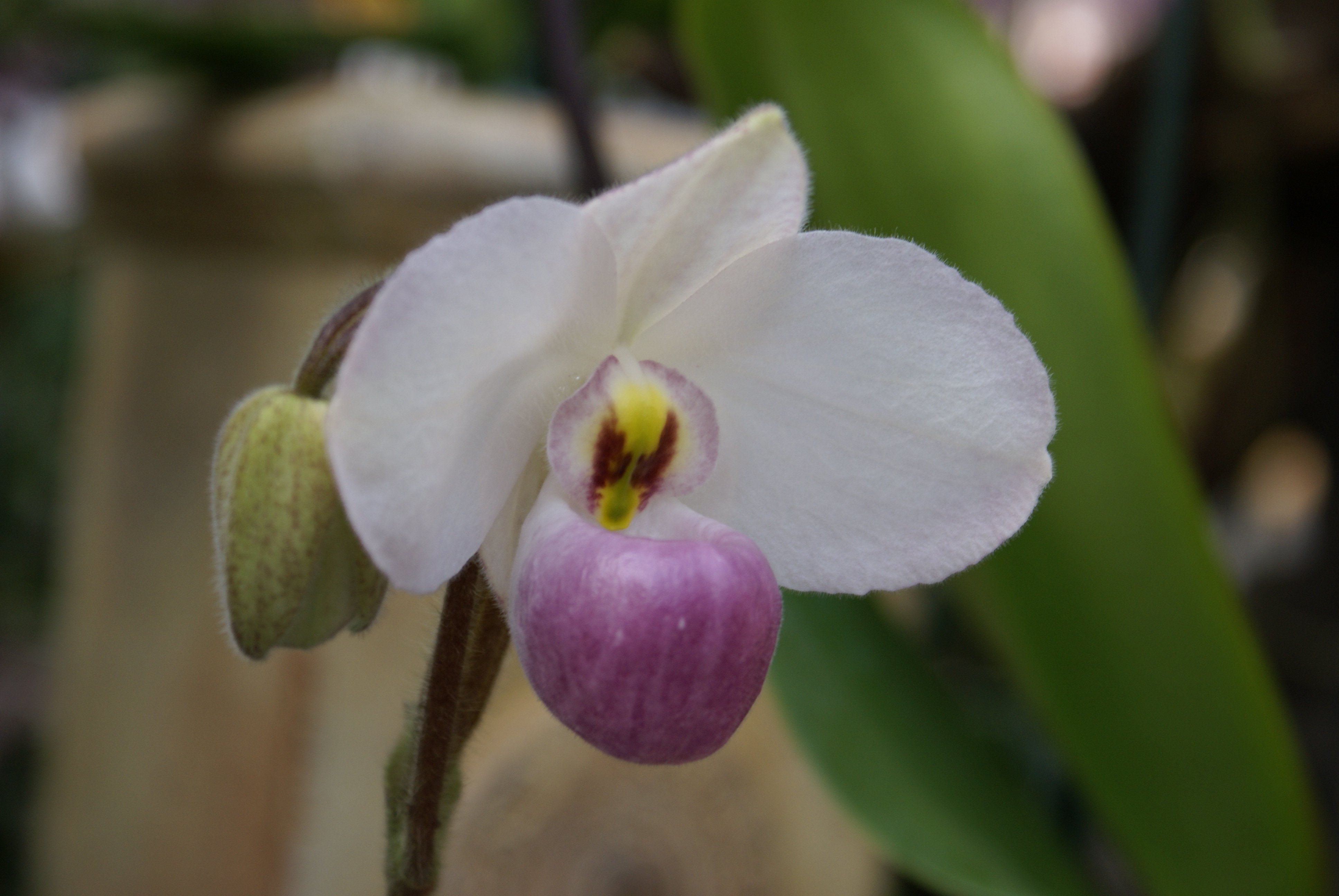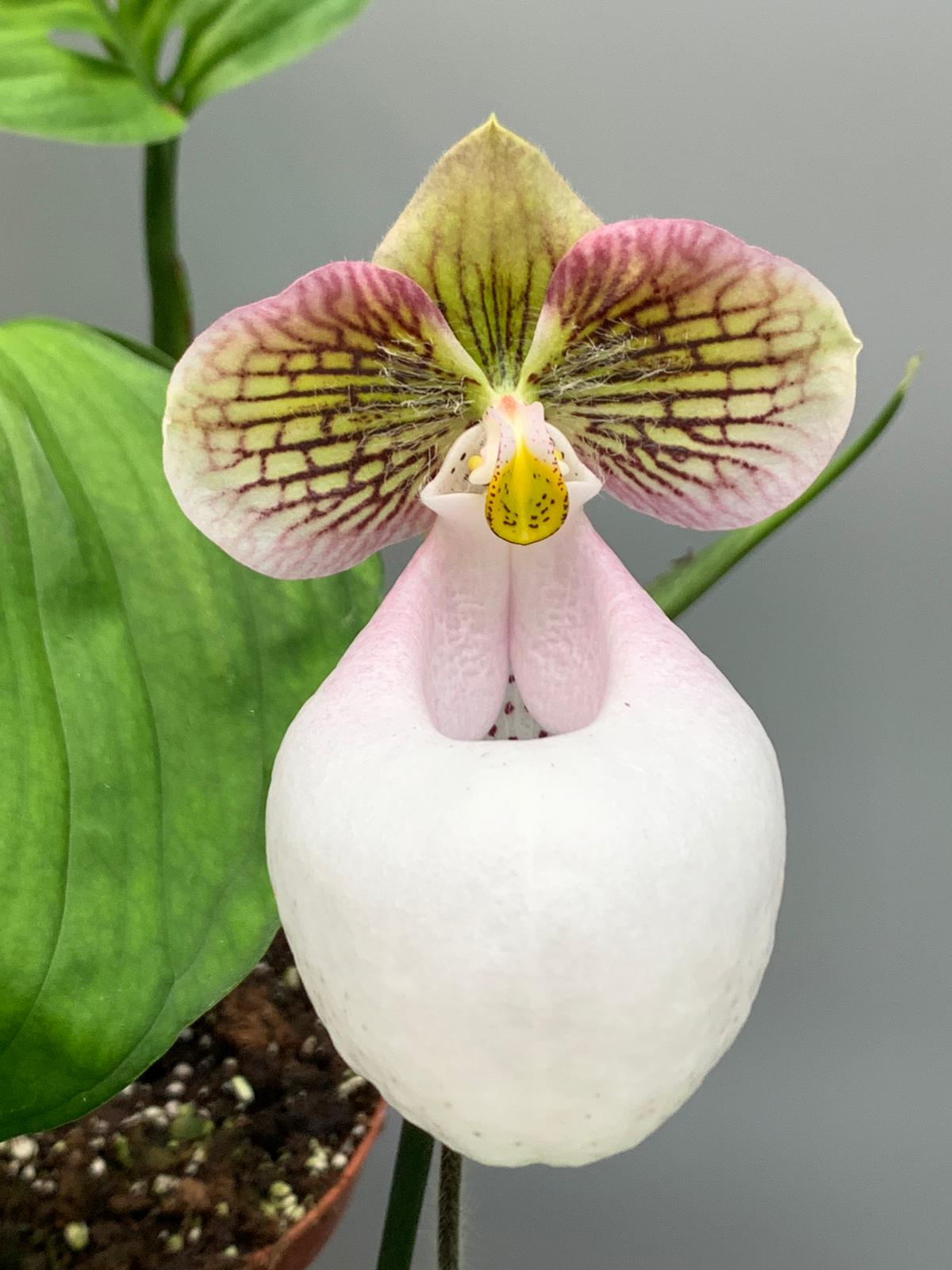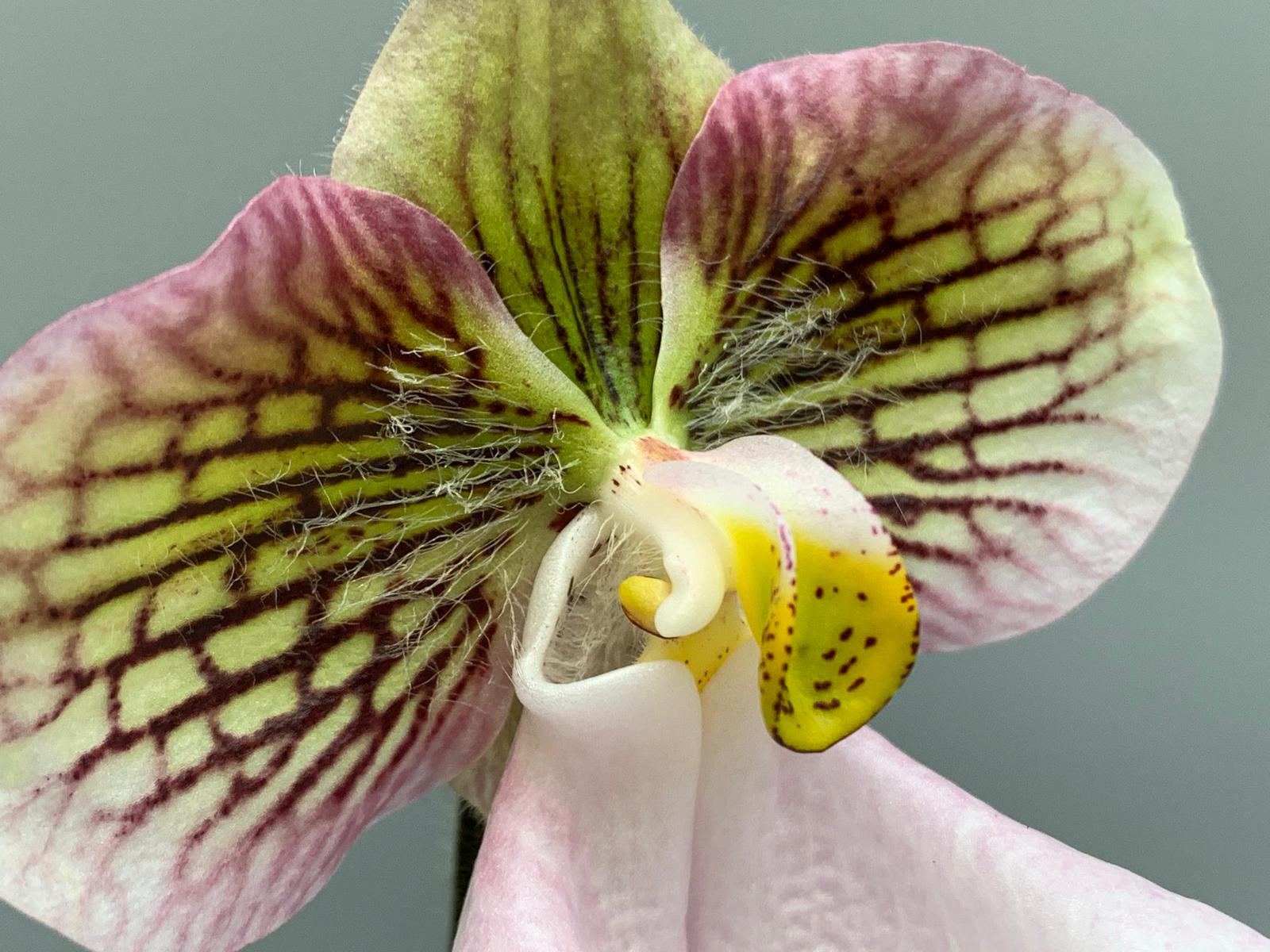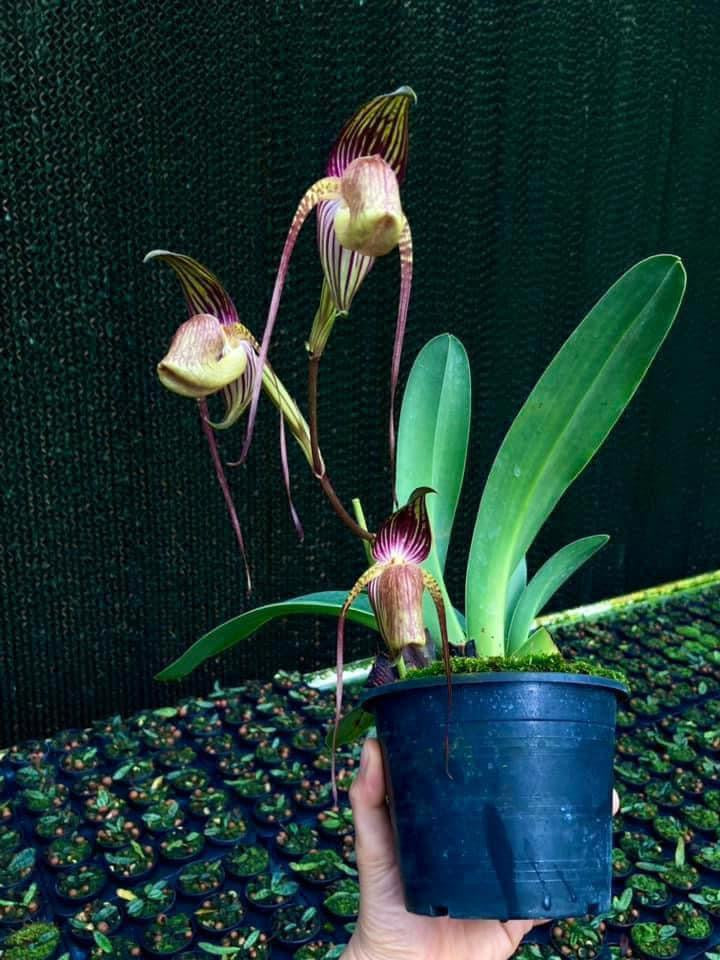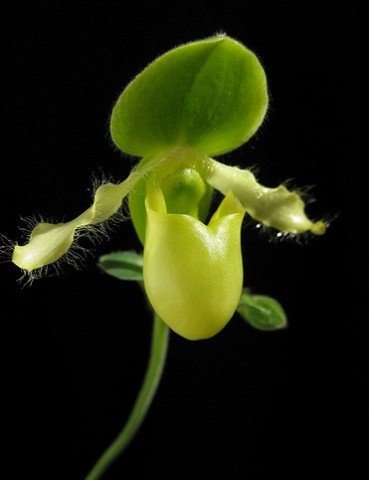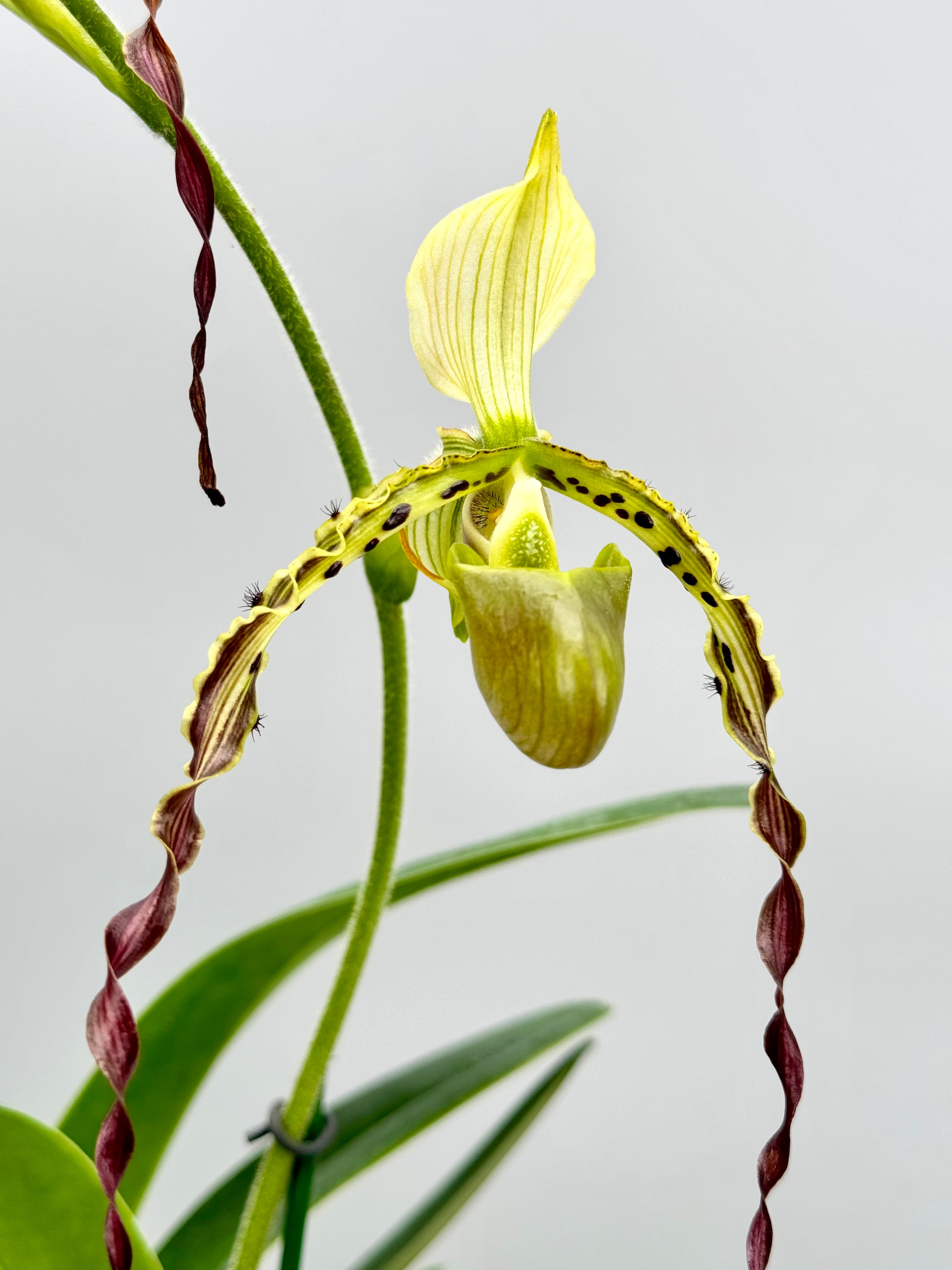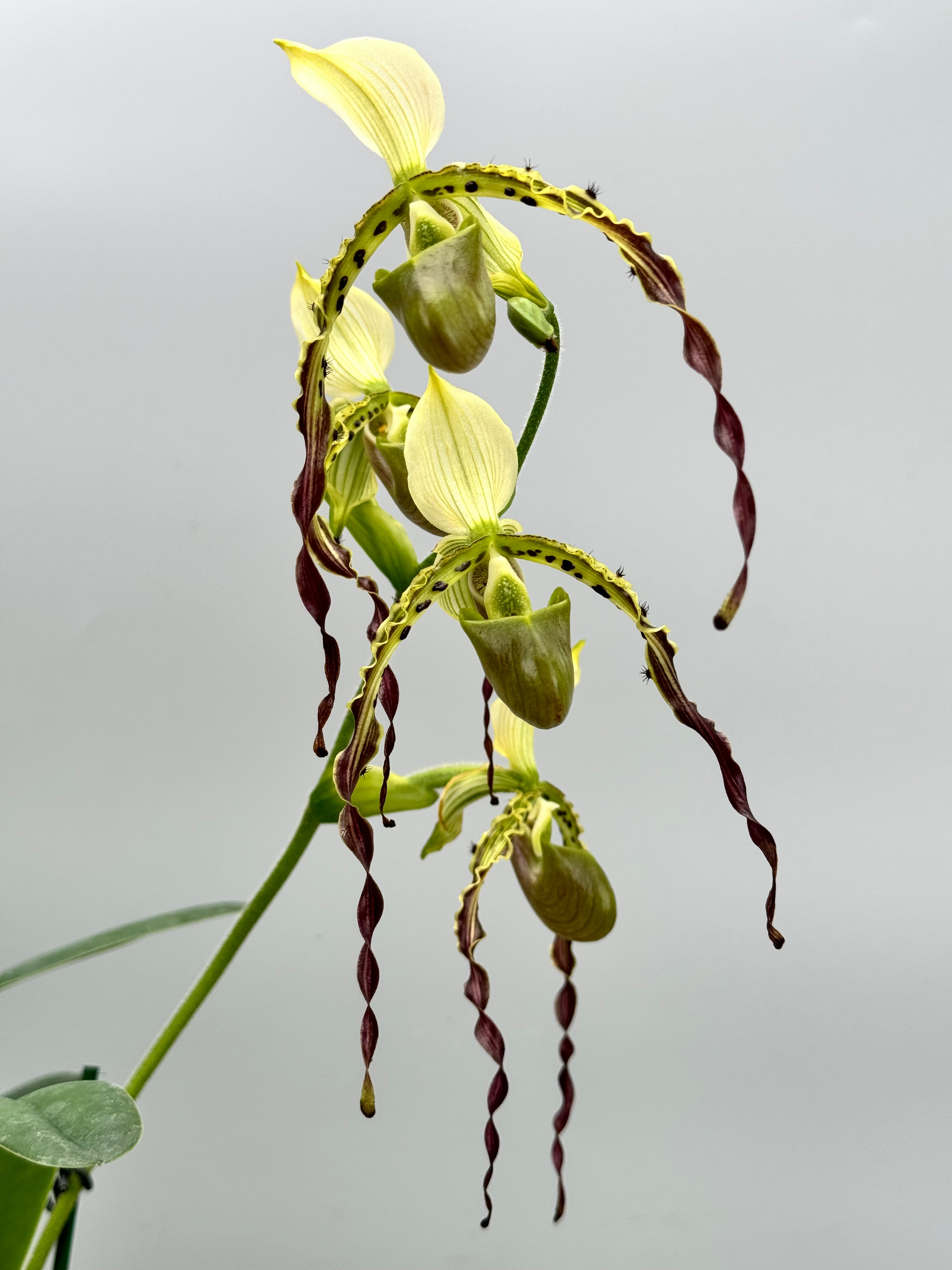Paphiopedilum parishii is a true eccentric among slipper orchids. This particular species from Southeast Asia is known for its spectacularly twisted flower parts and multiple inflorescences. A must-have for any collector looking for something truly unique.
Origin
Paphiopedilum parishii is a botanical species native to the northern part of Southeast Asia, particularly in the border region of Myanmar, Thailand, Laos, Vietnam and China's Yunnan province. The species was discovered in the mid-19th century by British botanist Charles Parish, to whom the plant also owes its name. It grew at a time when many European botanists traveled to Asia in search of unknown orchids.
In the wild, it grows P. parishii usually grows as a terrestrial or lithophytic plant on steep, shady slopes in mountain forests, at altitudes between 900 and 1,600 meters. There it nests among thick layers of moss, humus and fallen leaves, often on slightly calcareous soil or weathered rock. Due to the high humidity, constant mist mists and mild temperatures in these areas, the species developed a preference for cool, moist conditions with limited light.
Characteristics
What makes this species exceptional is its multi-flowered inflorescence with flowers that often have spectacularly twisted sepals and petals. The flowers are usually greenish with purple stripes and twisted, slender side leaves that sometimes have as many as 15 cm long. The flower lip has the typical slipper shape, softly colored in cream with purple tones. The inflorescence often bears 3 to 5 flowers at a time, which is relatively rare within the genus.
The plant itself forms a compact rosette of gray-green leaves with subtle markings. The total height of the flowering stem can range from 20 to 40 cm.
Care
Light
Light, but without direct sunlight. Ideal is filtered east or west light. Too bright sunlight quickly leads to leaf burn.
Temperature
This species desires moderate to cooler conditions:
- Daytime: 18-24 °C
- At night: 14-17 °C
Substrate
An airy, moisture-retaining mixture based on fine tree bark with a small amount of sphagnum moss if necessary. Avoid coarse ingredients. Provide a stable, well-drained base.
Humidity
Ideally, humidity should be 60-80%. A humidifier or regular spraying may be necessary during dry periods. In addition, provide light air movement (no drafts) to keep mold and bacteria from taking hold in a humid environment.
Watering
Always use demineralized water, possibly mixed clean rainwater, at room temperature. Keep the substrate slightly moist, but never wet. Allow the medium to dry out slightly between waterings before watering again.
Nutrition
During the growing season, lightly fertilize once every 2-3 weeks with a highly diluted high-quality orchid nutrient. In winter only at signs of growth.
Flowering
Paphiopedilum parishii usually blooms in spring to early summer. Each mature shoot blooms once. New shoots develop rather slowly, but once mature, they are often vigorous enough for lush blooms.

